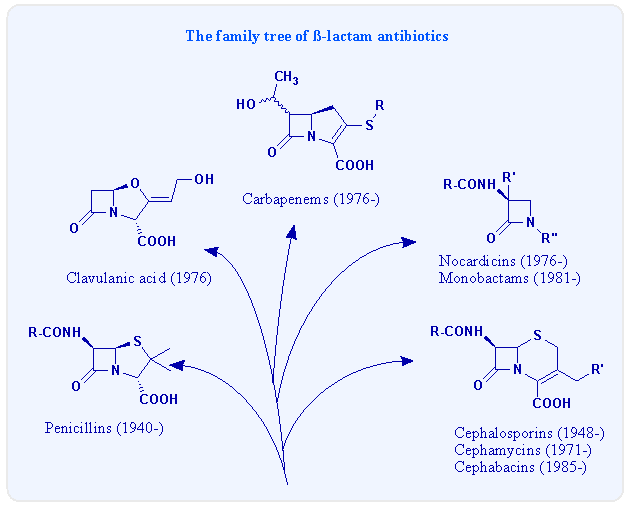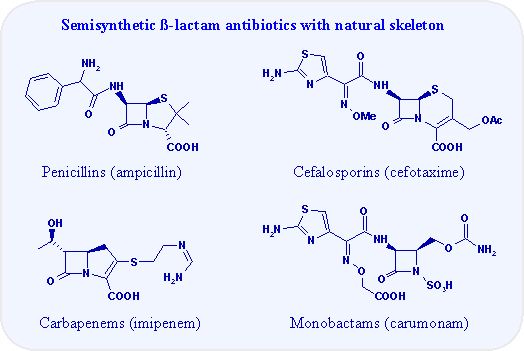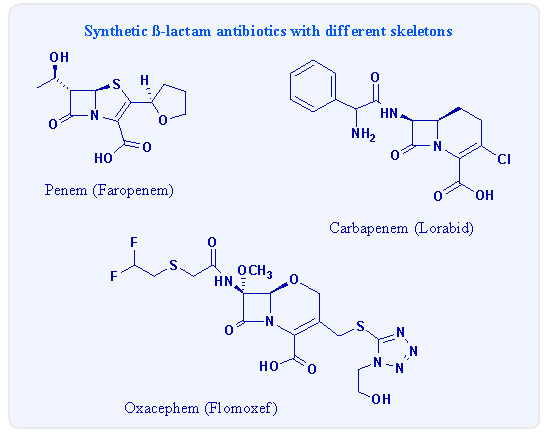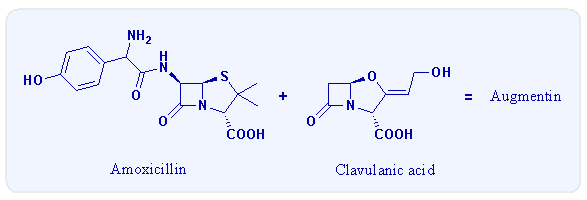On the β-Lactam Antibiotics in a Nutshell
The story of the β-lactam antibiotics started with penicillin, the well-known discovery of Sir Alexander Fleming. The β-lactam antibiotics can be classified into several groups according to their structural characteristics, but their unique structural feature is the presence of the four-membered β-lactam (azetidin-2-one) ring. Cephalosporins, carbapenems, the monocyclic monobactams, etc. belong also to this family of antibiotics:

The modifications of the 6(7)β-acylamido side chains of penicillins and cephalosporins have a profound influence on their antibacterial activity. Therefore nearly all of these antibiotics are semisynthetic derivatives of the natural compunds.

A number of different totally synthetic analogs are also known:

The β-lactam antibiotics inhibit the biosynthesis of the bacterial cell wall. Among the structural analogs of the β-lactam antibiotics the group of β-lactamase enzyme inhibitors are of highest importance, for example the natural clavulanic acid or the synthetic sulbactam. β-Lactamases are bacterial enzymes that catalyze the hydrolysis of the β-lactam ring, thus, they inactivate the antibiotics. The β-lactamase inhibitors are weak antibiotics per se, but they protect a real antibiotical agent from the bacterial hydrolysis. Therefore they are used in combination, for example the mixture of the antibiotic amoxycillin and the inhibitor clavulanic acid is marketed under the name Augmentin.

The reign of β-lactam antibiotics has been lasted for about 60 years now. Several reasons are responsible for this bright career: these antibiotics possess very low toxicity, and new semisynthetic or total synthetic derivatives with enhanced spectrum have continuosly been developed.
Tamas E. Gunda